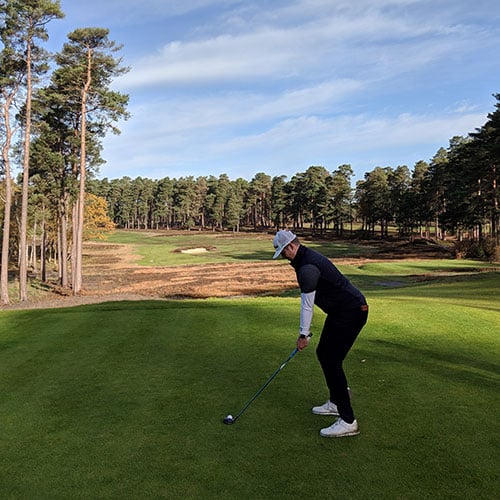

The TaylorMade Stealth driver is the first of a new generation of Carbonwood and is available in three heads - Stealth, Stealth Plus+, and Stealth HD. All three loft and lie adjustments are the same, while the Stealth Plus+ has the addition of a moveable weight channel.
And it's picking the most suitable model for your game and swing, which is the first critical decision before you start thinking about making any adjustments.
All three clubs have a weight anchored at the back of the club, and while the adjustment wrench does fit, we recommend that you never adjust this weight. It's already optimised for each driver and is only used within a custom fitting environment.
With a simple adjustment wrench, you can raise and lower the club's loft, give your Stealth driver a draw or fade bias, alter the clubs' trajectory, and increase or decrease spin rate.
Look at the opening and locking mechanisms of the screws. To open or loosen any screw in your driver, place the wrench into the top of the screw and turn anti-clockwise, and to tighten a screw turn it clockwise.
When fully tightened, there will be an audible 'click' to let you know the sleeve is safely locked in place and to avoid over-tightening.
When fully opened, the head can be easily removed from the shaft revealing numbers and settings on the tip. These indicate some of the different loft, lie, and face angle options you can choose.
TaylorMade uses a four-degree tip adapter. At the time of manufacture and assembly, the shaft will be set to standard (STD).
When the STD is lined up with the little arrow, the loft is 10.5-degrees (or what is printed on your driver), the lie angle is a standard 56-degrees, and the face angle is square. There are 12 different notches or movements around the sleeve. Each one increases or decreases loft by a half or three-quarters of a degree.
Rotating the shaft to the LOWER position, the driver's loft will be reduced by 2-degrees, now setting up like an 8.5-degree driver.
At this setting, the face will also be 4-degrees more open than normal, and the lie angle is up to 58-degrees. In this setting, the driver will want to put a fade shape on your drives.
Conversely, rotating the shaft to the HIGHER position will increase the loft of this 10.5-degree driver to 12.5-degrees.
Securing the head in the setting will close the face 4-degrees more than usual, putting a draw bias on your driver. The lie angle is also 58-degrees.
You don't have to adjust all the way to the LOWER or HIGHER settings; you can adjust incrementally along the notches in between to make the changes more subtly.
Spinning the tip adaptor through 180-degrees reveals the upright (UPRT) marking. The loft is back as stated when securing the shaft in this position, but the club sits 4-degrees more upright, setting the club up for a draw while maintaining the stated loft.
Again from this UPRT setting, you can make the loft LOWER or HIGHER incrementally to make subtle changes.
The Stealth Plus+ model differs from the other two drivers in that it also has the sliding weight channel sitting behind the speed pocket. The 10-gram weight can be moved to any position to change the club's centre of gravity and put a draw or fade bias on your shots.
The same adjustment tool opens and closes the sliding weight allowing it to move along the channel. In a standard or neutral setting, the weight is behind the N marker on the driver, in line with the face's sweet spot.
Sliding the weight to the heel, marked DRAW, will make the face want to shut more quickly on the downswing and put a draw bias on your drives.
Conversely, if you slide the 10-gram weight all the way to the toe, marked FADE, and secure it there, it will hold the face open during the downswing and add a fade shape on your drives.
Again you don't have to adjust all the way left or right; you can secure the weight anywhere along the channel to see the changes more subtly.
It is essential to remember that you can adjust your driver on the range or at any time before or after your round, just not during it!